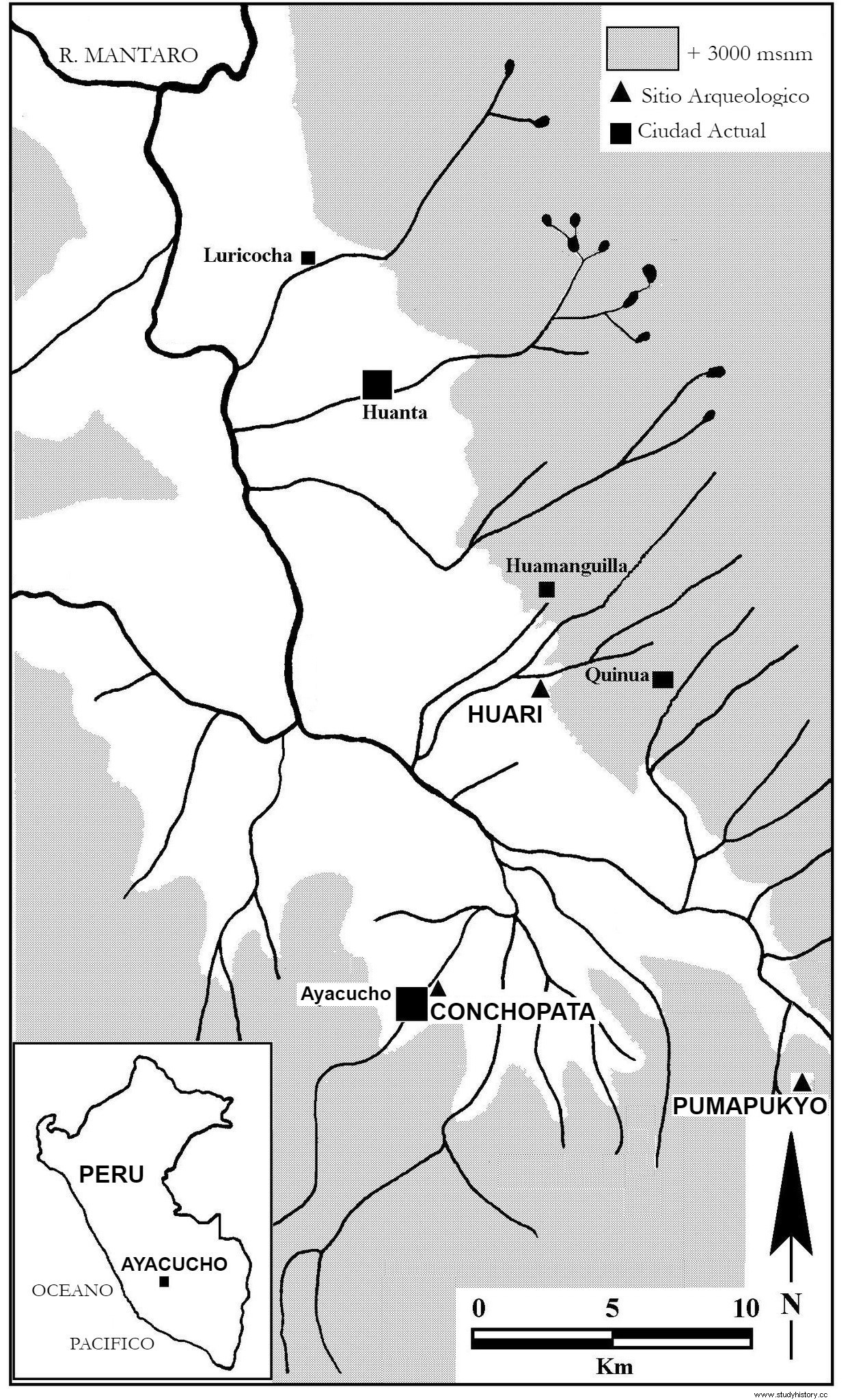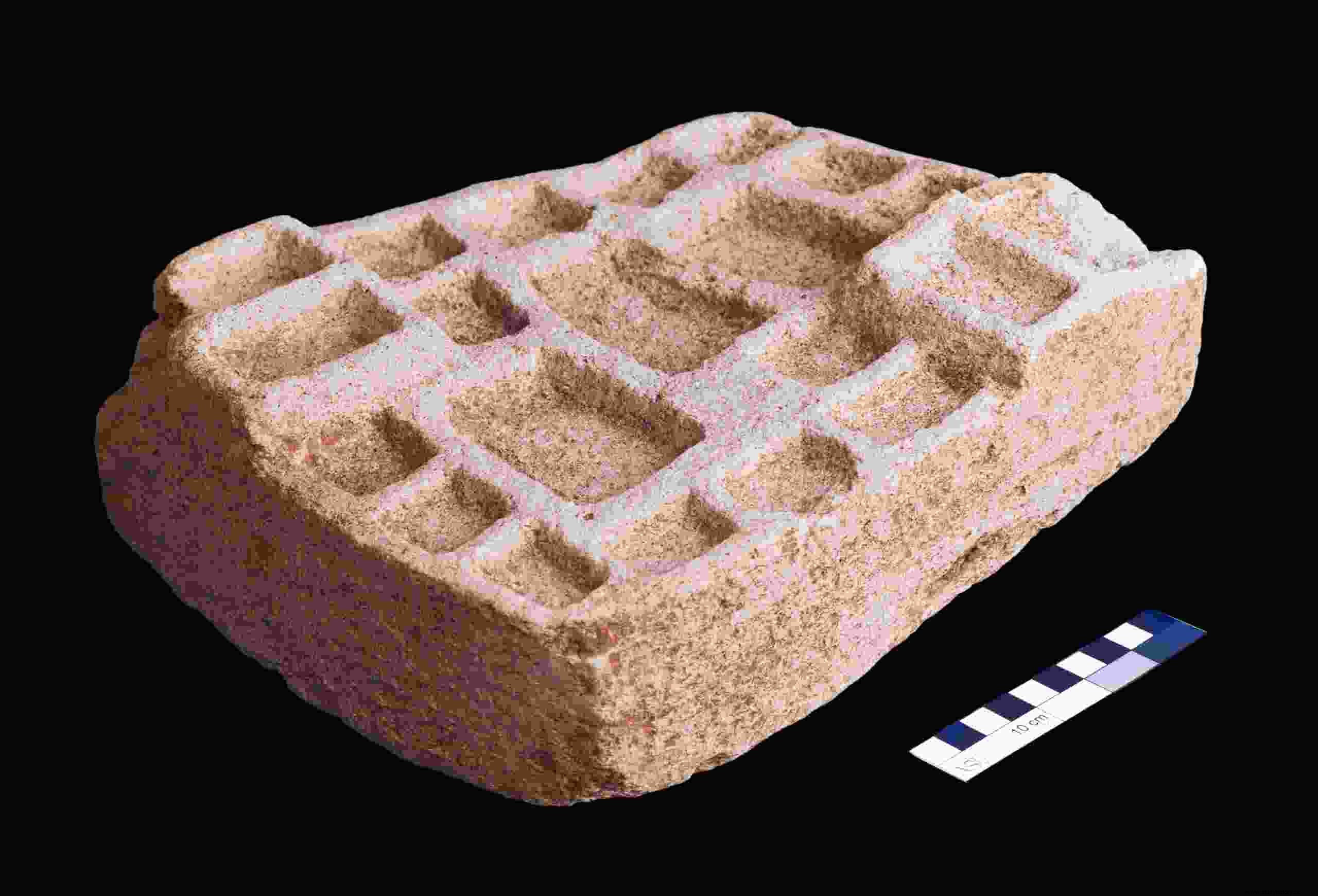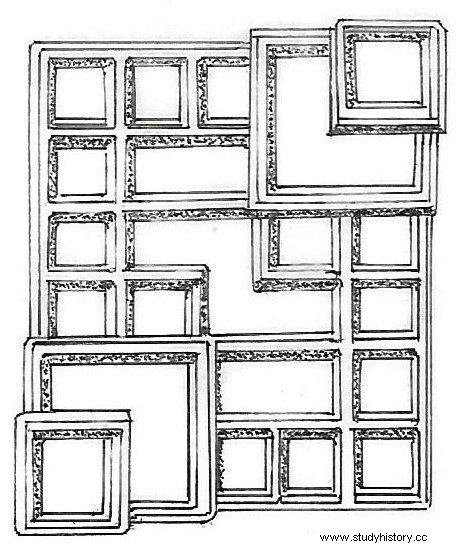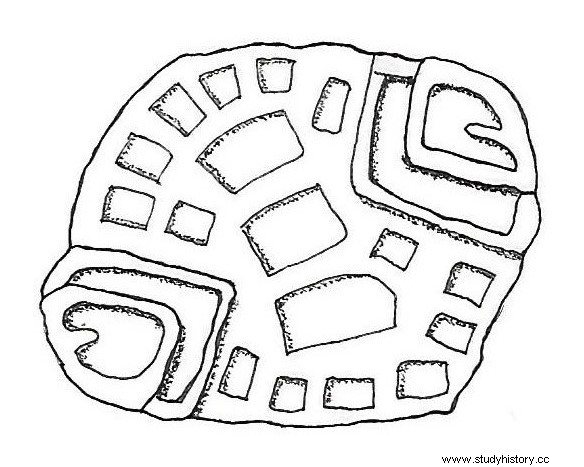A Wari game board in the Ayacucho Valley, Peru
The human species has a unique and lasting interest in and fascination with games. Such an insurmountable interest indicates that people need to play and must play. Continuing with the monotony of everyday life without playing seems impossible to think about! You need a break to escape the tedious routine. Scientific research shows that playing games is universal, like Language, and exists in any culture, regardless of its social and economic complexity. From hunters and gatherers, to gardeners, farmers, shepherds, to members of urban communities, everyone, in one way or another, participates in the game. This universality suggests that cultures that existed in the past probably also played. For many regions, there is tangible evidence that accurately confirms that ancient human populations were involved in gambling. However, this does not seem to be the case for the ancient central Andes. For some reason, researchers have not found the material manifestation of games, or they have just mislabeled the gaming equipment as something else.
Contrary to the existing evidence, colonial documents acknowledge that the Incas played several games. The same sources mention that some of these games included boards and dice, known as pichqa. In Quechua, the official language of the Incas, there is a word to play, and it is puklay . Therefore, it can be stated that the Incas were not an exception when it came to playing. Unfortunately, though, the Inca Game Board is still unknown, except for the dice. The Incas, of course, were the last to arrive, and there were countless nations ahead of them, nations that were probably also involved in the fighting. Except in a few exceptional cases, game boards or toys from the pre-Inca era are not mentioned by scientists.

A Wari game board from Pumapukyo

An archaeological rescue operation carried out in Pumapukyo, an archeological site in the Peruvian central highland valley of Ayacucho, resulted in the accidental discovery of a semi-rectangular table made of volcanic tuff. The board measures 24 x 20 x 10 cm. Pumapukyo was occupied at the time the Wari state (550 - 1000 AD) flourished in the region, several centuries before the rise of the Inca Empire. This is a unique and very important discovery, especially considering that a similar object had never been found in the context of the Wari state.
The Pumapukyo board is a solid piece that has 21 compartments or boxes in different sizes, some of which are a bit square while others a bit rectangular. First, at two opposite corners of the board, a pair of rectangular spaces appear. Second, on both sides of each pair of rooms, six boxes are established at the edge of the board and are much smaller than the above rooms. In total, there are twelve boxes, some of which are slightly square, while others are slightly rectangular. Third, on the left side of the pair of rooms is another small box, located inside the first box established on the edge. Finally, in the central part of the board there are three rectangular rooms of similar size, but slightly larger than the rooms in pairs. Two of the central rooms are located side by side.

Objects with comparable characteristics were previously reported from Cuenca (Patecte), Ecuador, the northern coast of Peru and the Ancash region, in the central-northern highlands of Peru. The tray from Cuenca is said to have been found as part of a tomb from Cañari. Apart from a few minor differences, the board from Cuenca is very similar to the recently found board from Pumapukyo. The board from Ancash (Pashash) can also be compared to the two boards above. Even more important, perhaps, is that the Ancash tablet is said to come from an archaeological context dating to the later phases of the early intervening period (AD 100 - 550), and therefore earlier than the Pumapukyo rule. In that case, the Ancash board will be the oldest known board for the entire Central Andes Mountains. Another board has reportedly been found in Pachacamac on the central coast of Peru. Unlike the other boards, the one from Pachacamac is a bit round ( Figure 5 ) but has twenty-one rum boxes, and thus it can be compared to the other boards.


Previously, these paintings, including the one from Pumapukyo, had been interpreted as architectural models or maps. Therefore, it would not be an exaggeration to claim that the seemingly rare occurrence of gaming boards or tablets in the archaeological journal may be the result of misidentification. Some researchers claim that this is a game board, a game that has not yet been identified, an interpretation I agree with. It is likely that the boards were used in racing games of the ludo type. Other researchers claim that the boards may have had an association with ritual battles, in addition to being miniature representations of known geographical spaces.
The question that immediately arises is:how did this possible game work or what were the rules? It is known that games have their own rules. The Pichqa game in which the Incas participated actually not only had rules, but also had the presence of referees, authorities who were possibly responsible for complying with the rules of the game. The game that used the boards mentioned here possibly also had its own rules. It is likely that we may never know what the rules were, but they can be deduced from the board itself.
Playing the game
Historical information coming from northwestern Argentina seems to have ancient roots, and the game was played as late as the end of the 19th century. Reportedly, the game that used the boards included a dice and tokens (corn kernels, beans, pebbles) that could be moved from box to box, as the dice marked. Furthermore, the board was not necessarily a material object, but could be pulled directly on the ground. The shape of the board could also be round or square, while the size varied according to the number of participants. The historical information also suggests that the pair of rooms found on two of the corners of the board were called the Big House, while the larger rooms in the middle became known as Water.
The same source claims that two to four players, each with four tokens, also known as soldiers, would play. The tokens were placed in the large house. If there were four players, they played in pairs and sat side by side next to the big house. The pair of players could cooperate and not eliminate each other.
On the Pumapukyo board, the presence of two squares next to each other and the maintenance of the same level may also be an indication of the importance of the concept of duality. In fact, central Andean communities are divided into two parts:hanan (upper) and hurin (lower). While both divisions maintained resistance, the cooperation between the two sides was crucial to the well-being of society. For example, this is the case with the community of Sarhua, located on the left bank of the Qaracha River, one of the tributaries of the Pampas River, south of Ayacucho. Both partialities, known as ayllus, become visible during joint work, as is the case with the construction of the suspension bridge established across the Pampas River. The construction of the suspension bridge depends on the active cooperation of both ayllus. If these ideas have any relevance, the game that made use of the boards mentioned here was perhaps one where two adjacent communities, each represented by its two parts ( ayllus ), participated in puklay . The game, also categorized as a meeting or a ritual battle, is known as tinkuy .
Following the historical information from northwestern Argentina to get the tokens out of the big house and start moving them around the board, it was necessary to make pichqa with the dice. Pichqa is five and was marked on the cube with an X (see Figure 1). From then on, the player can move his tokens from square to square, without going back. If the player in this route came to a route where there were conflicting tokens, he / she ate them and took them out of the game. If the player arrived at the big house of the opponents and they had not yet made pichqa to start moving their pieces, the person who arrived would eat a couple of tokens, but to leave the big house he / she had to roll the dice again and take pichqa again . The danger was to lose the token if the opposing players got pichqa.
If any token could go all the way around the board without being eaten, it could go towards the central compartments called Water. But to get in there, the player had to get the exact score, because otherwise he / she would go over the water and the counter would fall to the opposite side, which indicated that the player had to go back and forth until he / she got the correct score. In the water, the token was out of danger because the points were collected for the final count, and the player who managed to get most of his tokens in the water (or eat all the opponents' tokens) would be the winner.
Here it is necessary to mention that when we discuss the pichqa game in which Tupa-Inka Yupanqui had participated, Bernabe Cobo (a Spanish chronicler) mentions that the Inca only needed number one to win the game, but if he did not draw the said number had to start new. Therefore, it is implicit from this observation that the game in which Tupa-Inka Yupanqui participated not only used the pichqa dice, but also a board. Unfortunately, Cobo never mentioned the possible board, and not a single known Inca board allows any comparison.
With the Pumapukyo board, it is possible that four players played the game, and the playing procedure may have been the same. In other words, four players can play on the Pumapukyo board, two on each side and each with their respective tokens. Based on their respective large houses, and when the pichqa was rolled, the tokens could be moved from square to square around the board, counterclockwise. This is always in view of the fact that most people are right-handed. Along this road, there was the opportunity to find conflicting tokens that could potentially be eliminated. Of course, there was also the danger of being eliminated. It must be said, in addition, at least in Inca times, the games were for prizes, prizes which in some cases were of the order of an entire ayllu, such as those which the Inca apparently lost to his son.
No matter how the game may have been played in Wari times, the discovery of the Pumapukyo board shows that board games were already played in the central Andes long before the rise of the Inca Empire. It is currently unknown whether Wari also used the dice. The possible discovery of some Wari dice would help to demonstrate not only the antiquity of the pichqa game, but also that the Inca-era pichqa game has Wari prehistory.
Meaning in Anthropology
As some researchers acknowledge, the topic of games is both broad and confusing, reasons that may have contributed to the researchers' lack of interest. But the fact that games, especially those that include rules and strategies, are purely human, tells us a lot about their relevance and that they deserve careful analysis. Therefore, it is important to consider questions such as, what do games do? And why the fascination of people for games? There may be different answers to these questions, answers that possibly reflect both cultural diversity and the different motivations that make people participate in games. As some have pointed out, perhaps one of the main motivations for the enormous human interest in gaming is the fact that gaming in general is "fun and remarkable antidote to boredom."
The Pumapukyo board is a tangible example of Wari participating in the games. Until recently, it was unknown whether Wari played games; the discovery of the board discussed here opens up a whole opportunity for research on a topic that has not been discussed in the context of the Wari state. From this brief observation, it becomes clear that Wari was no different from other cultures when it came to playing games. The apparent lack of material manifestations of games played in the distant past, or the small success of specialists in recovering such material evidence, gave the impression that the ancient population of the Central Andes were not active participants in the games. However, the accidental discovery of objects such as the one mentioned here shows that archaeologists have a lot to learn about the ancient games that were played in the central Andes.
